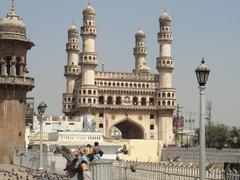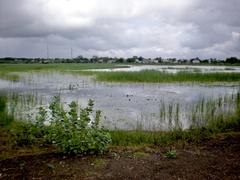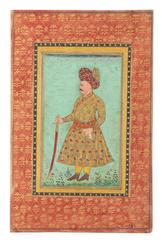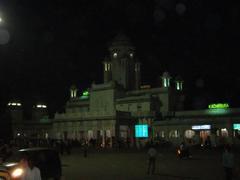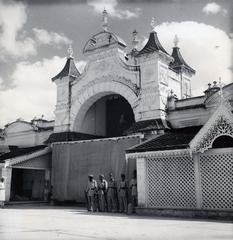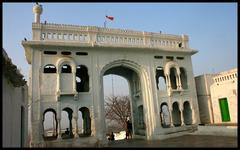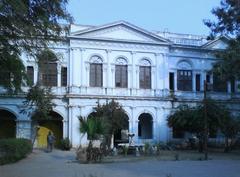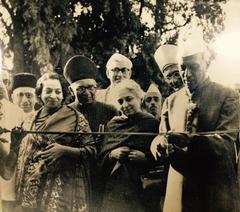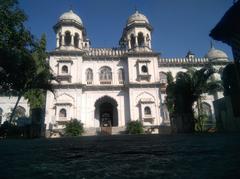
British Residency (Rashtrapati Nilayam) Secunderabad: Visiting Hours, Tickets, and Historical Significance
Date: 03/07/2025
Introduction
The British Residency, also known as Koti Residency or Rashtrapati Nilayam, is a monumental symbol of Hyderabad’s colonial past and an outstanding example of neoclassical architecture. Located in the historic Koti area, this 19th-century edifice once served as the residence and administrative headquarters of the British Resident to the Nizam of Hyderabad. Its storied halls have witnessed episodes of diplomacy, romance, and cultural exchange, most notably the legendary tale of James Achilles Kirkpatrick and Khair-un-Nissa Begum, immortalized in William Dalrymple’s White Mughals.
Today, following extensive restoration and its transformation into the Osmania University College for Women campus, the Residency stands as a beacon of heritage conservation and educational empowerment. This comprehensive guide details its history, architecture, visiting hours, ticketing, guided tours, accessibility, travel tips, and nearby attractions—making it essential reading for history enthusiasts, architecture lovers, or anyone exploring Hyderabad’s rich past.
For further historical context and visitor information, see World of Interiors, Navrang India, and Wikipedia.
Table of Contents
- Introduction
- Historical Background
- Visiting the British Residency Hyderabad
- Nearby Attractions
- FAQs
- Conclusion
- References
Historical Background
Origins and Early Establishment
Established in 1779 and reconstructed between 1798 and 1805, the British Residency served as the official residence of the British East India Company’s diplomatic representative at the Nizam’s court (World of Interiors). Its construction marked the assertion of British influence in the Deccan, with the Residency becoming the epicenter of political negotiations and cultural interactions between the British and the Nizam’s administration.
Architectural Evolution and Symbolism
Initially functional and modest, the Residency underwent significant expansion under James Achilles Kirkpatrick, emerging as a neoclassical masterpiece. The building’s grand portico with Corinthian columns, Palladian symmetry, sweeping staircases, and ornate interiors were designed to rival the palaces of Hyderabad and project imperial authority (Navrang India). Beyond aesthetics, the architecture served as a statement of power and cultural blending, influencing Hyderabad’s urban landscape.
Political and Social Context
More than a residence, the British Residency was a nerve center for British policy in Hyderabad. The Resident wielded significant influence—advising the Nizam, shaping alliances, and overseeing British interests. The romance between Kirkpatrick and Khair-un-Nissa Begum highlighted the Residency’s role as a site of both political intrigue and cultural exchange (Minor Sights).
Later History and Adaptive Reuse
With Indian independence in 1947 and Hyderabad’s integration into the Indian Union in 1948, the Residency’s political function ended. It was repurposed as the campus of Osmania University College for Women (now Telangana Mahila Viswavidyalayam), shifting from a colonial institution to a center of higher learning (World of Interiors).
Conservation and Recent Developments
Decades of neglect led to deterioration, but a major restoration spearheaded by Osmania University, the Telangana government, and the World Monuments Fund restored the Residency’s splendor (NewsMeter). Conservation efforts preserved original features, revived the gardens, and created a heritage museum, ensuring the Residency’s accessibility and educational value for future generations.
Notable Figures and Cultural Legacy
James Achilles Kirkpatrick remains the Residency’s most renowned resident, celebrated for his cross-cultural marriage and enduring architectural legacy. The Residency’s history embodies the complexities of British-Indian relations and the fusion of artistic traditions, earning its place as a cultural and educational landmark.
Visiting the British Residency Hyderabad
Location
- Address: Osmania University College for Women, Esamiya Bazaar, Koti, Hyderabad, Telangana 500095, India (Hyderabad Advisor)
- Well-connected by public transport (bus, metro, auto-rickshaw) and accessible from major railway stations and the airport (Native Planet).
Visiting Hours
- Monday to Saturday: 10:00 AM – 5:00 PM
- Sunday: 9:00 AM – 12:00 PM
- Closed: Public holidays and during university events (LBB Hyderabad)
- Visits are typically organized in 25-minute slots to ensure preservation; advance online booking is recommended (Telangana Today).
Tickets and Entry Fees
- General Visitors (Indian nationals): ₹100 per person
- Foreign Nationals: ₹200 per person
- Students: ₹50 per person (with valid ID)
- Children under 12: Free
- Photography Pass: ₹100 per session
- Film/Photo Shoots: ₹1.5 lakh/day (exterior), ₹3 lakh/day (interior)
- Tickets are booked primarily online, with limited on-site availability (Telangana Today).
Guided Tours and Heritage Walks
- Several organizations, including The Deccan Archive and Detours India, offer guided heritage walks.
- Tours (2–3 hours) cover the Darbar Hall, gardens, key rooms, and stories of the Residency’s history and architecture (The Deccan Archive).
- Tour Fees: From ₹6,000 for private groups (up to 10 people), including entry.
Accessibility and Facilities
- Wheelchair access: Provided at the entrance and ground floor; upper floors may be less accessible due to heritage constraints.
- Restrooms: Available within the campus; ask security/guides for directions.
- Parking: Limited; public transport or ride-hailing is recommended.
- Food: No on-site café; local options available nearby.
- Souvenir shop and museum: Onsite, featuring artifacts and exhibits on Residency history (Wikipedia).
Visitor Etiquette
- Modest attire is advised (as the Residency is within a women’s college).
- Maintain silence in the museum; do not touch artifacts.
- Photography allowed with a valid pass; flash and tripods may be restricted.
- Children must be supervised; food and large bags are not permitted inside.
Best Time to Visit
- October to March: Pleasant weather (15–25°C), ideal for touring the Residency and gardens.
- Summers (April–June) are hot; monsoon (July–September) may hinder outdoor exploration (Native Planet).
Architectural and Cultural Highlights
- Grand Portico: Six Corinthian columns, Palladian symmetry (NewsMeter).
- Darbar Hall: High ceilings, ornate chandeliers, detailed stucco work.
- Zenana Quarters: Women’s quarters blending Indian and British traditions.
- Gardens: Landscaped lawns and fountains, partially preserved.
- Museum: Artifacts, documents, and multimedia exhibits on colonial Hyderabad and the restoration process.
Special Events and Activities
- Cultural events, lectures, and exhibitions are held periodically—check Osmania University College for Women or social media for updates.
- Film and photo shoots are permitted with prior authorization and additional fees.
Nearby Attractions
Make the most of your Hyderabad visit by exploring:
- Charminar: 2.8 km away
- Salar Jung Museum: 2.5 km away
- Hussain Sagar Lake: 7 km away
- Secunderabad Clock Tower: 7 km away
Frequently Asked Questions (FAQs)
Q: What are the British Residency visiting hours?
A: Monday–Saturday, 10:00 AM–5:00 PM; Sunday, 9:00 AM–12:00 PM. Closed on public holidays and certain university events.
Q: How do I book tickets?
A: Book online via the university website or heritage walk organizers. On-site ticketing is limited.
Q: Is photography allowed?
A: Yes, with a paid pass. Professional equipment requires special permission.
Q: Are guided tours available?
A: Yes. Several organizations run heritage walks and guided tours (2–3 hours).
Q: Is the Residency wheelchair accessible?
A: The main entrance and ground floor are accessible; upper floors may be less so.
Conclusion
The British Residency (Rashtrapati Nilayam) in Hyderabad is a living testament to the city’s complex colonial heritage, architectural grandeur, and cultural narratives. From its origins as the nerve center of British power in Hyderabad to its current role as a place of learning and public heritage, the Residency stands as a bridge between eras. Meticulously restored, it welcomes visitors with its stately architecture, engaging exhibitions, and evocative stories.
Plan your visit by checking the latest hours and ticket details, book your slot online, and consider joining a guided tour for deeper insights. To enhance your experience, download the Audiala app for guided audio tours and up-to-date information on Hyderabad’s historical sites.
For ongoing updates and detailed resources, visit Osmania University College for Women, World Monuments Fund, and Telangana Today.
References
- Wikipedia
- NewsMeter
- Navrang India
- Timeles
- Polkajunction
- Telangana Today
- Hyderabad Advisor
- World of Interiors
- Siasat
- Native Planet

